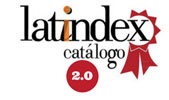Extended Realities: The future of interactive teaching and learning
DOI:
https://doi.org/10.61395/victec.v5i8.157Keywords:
realidades extendidas; educación; realidad virtual; realidad aumentada; aprendizaje interactivo; tecnología educativa.Abstract
This study explores the impact of extended reality (XR) technologies on education, aiming to assess their effectiveness in enhancing learning and teaching. Building on previous research suggesting the potential of XR to increase information retention and student engagement, this study employs an explanatory sequential mixed-methods research design. In the quantitative phase, data is collected from pre- and post-intervention questionnaires of approximately 100 secondary and university-level students and educators. The results show a significant improvement in information retention and student engagement after XR sessions. Additionally, most participants rated the user interfaces as intuitive and easy to use. The qualitative phase, which includes interviews and focus groups, reveals positive perceptions of XR experiences, highlighting their attractiveness and ability to enhance understanding of complex concepts. However, challenges such as lack of adequate equipment and the need for teacher training are also identified. In conclusion, this study highlights the transformative potential of XR in education while emphasizing the importance of addressing practical barriers to their effective implementation. The findings contribute to the growing evidence on the effectiveness of XR in educational settings and provide valuable insights for educators and policymakers seeking to integrate these technologies into educational practice.
Downloads
References
Akçayır, M., & Akçayır, G. (2017). Advantages and challenges associated with augmented reality for education: A systematic review of the literature. Educational Research Review, 20, 1-11.
Alhalabi, W. S. (2016). Virtual reality systems enhance students' achievements in engineering education. Behaviour & Information Technology, 35(11), 919-925.
Azuma, R. T. (1997). A survey of augmented reality. Presence: Teleoperators & Virtual Environments, 6(4), 355-385.
Billinghurst, M., & Kato, H. (2002). Collaborative mixed reality. In Proceedings of the First International Symposium on Mixed Reality (pp. 261-284). Springer, Berlin, Heidelberg.
Caudell, T. P., & Mizell, D. W. (1992). Augmented reality: An application of heads-up display technology to manual manufacturing processes. In Proceedings of the Twenty-Fifth Hawaii International Conference on System Sciences (Vol. 2, pp. 659-669). IEEE.
Cheng, K.-H., & Tsai, C.-C. (2016). The interaction of child–parent shared reading with an augmented reality (AR) picture book and parents' conceptions of AR learning. British Journal of Educational Technology, 47(1), 203-222.
Dunleavy, M., & Dede, C. (2014). Augmented reality teaching and learning. In J. M. Spector, M. D. Merrill, J. Elen, & M. J. Bishop (Eds.), Handbook of research on educational communications and technology (pp. 735-745). Springer.
Gaba, D. M. (2004). The future vision of simulation in health care. Quality and Safety in Health Care, 13(suppl 1), i2-i10.
Jeffs, T. L. (2010). Virtual reality and special needs. Themes in Science and Technology Education, 2(1-2), 253-268.
Kavanagh, S., Luxton-Reilly, A., Wuensche, B., & Plimmer, B. (2017). A systematic review of Virtual Reality in education. Themes in Science and Technology Education, 10(2), 85-119.
Kolb, D. A. (1984). Experiential learning: Experience as the source of learning and development. Prentice-Hall.
Lateef, F. (2010). Simulation-based learning: Just like the real thing. Journal of Emergencies, Trauma, and Shock, 3(4), 348-352.
Lave, J., & Wenger, E. (1991). Situated learning: Legitimate peripheral participation. Cambridge University Press.
Lindgren, R., Tscholl, M., Wang, S., & Johnson, E. (2016). Enhancing learning and engagement through embodied interaction within a mixed reality simulation. Computers & Education, 95, 174-187.
Maas, M. J., & Hughes, J. M. (2020). Virtual, augmented and mixed reality in K–12 education: A review of the literature. Technology, Pedagogy and Education, 29(2), 231-249.
Martín-Gutiérrez, J., Mora, C. E., Añorbe-Díaz, B., & González-Marrero, A. (2017). Virtual technologies trends in education. EURASIA Journal of Mathematics, Science and Technology Education, 13(2), 469-486.
Mayer, R. E. (2014). Cognitive theory of multimedia learning. In R. E. Mayer (Ed.), The Cambridge handbook of multimedia learning (2nd ed., pp. 43-71). Cambridge University Press.
Mazuryk, T., & Gervautz, M. (1996). Virtual reality-history, applications, technology and future. Vienna University of Technology.
Milgram, P., & Kishino, F. (1994). A taxonomy of mixed reality visual displays. IEICE Transactions on Information and Systems, 77(12), 1321-1329.
Radianti, J., Majchrzak, T. A., Fromm, J., & Wohlgenannt, I. (2020). A systematic review of immersive virtual reality applications for higher education: Design elements, lessons learned, and research agenda. Computers & Education, 147, 103778.
Slater, M. (2009). Place illusion and plausibility can lead to realistic behaviour in immersive virtual environments. Philosophical Transactions of the Royal Society B: Biological Sciences, 364(1535), 3549-3557.
Slater, M., & Sanchez-Vives, M. V. (2016). Enhancing our lives with immersive virtual reality. Frontiers in Robotics and AI, 3, 74.
Speicher, M., Hall, B. D., & Nebeling, M. (2019). What is mixed reality? Proceedings of the 2019 CHI Conference on Human Factors in Computing Systems, 1-15.
Suh, A., & Prophet, J. (2018). The state of immersive technology research: A literature analysis. Computers in Human Behavior, 86, 77-90.
Sutherland, I. E. (1965). The ultimate display. In Proceedings of the IFIP Congress (Vol. 2, pp. 506-508).
Sweller, J. (1988). Cognitive load during problem solving: Effects on learning. Cognitive Science, 12(2), 257-285.
Parong, J., & Mayer, R. E. (2018). Learning science in immersive virtual reality. Journal of Educational Psychology, 110(6), 785-797.
Pellas, N., Fotaris, P., Kazanidis, I., & Wells, D. (2019). Augmenting the learning experience in primary and secondary education: A systematic review of recent trends in augmented reality game-based learning. Virtual Reality, 23(4), 329-346.
Piaget, J. (1952). The origins of intelligence in children. International Universities Press.
Vygotsky, L. S. (1978). Mind in society: The development of higher psychological processes. Harvard University Press.








